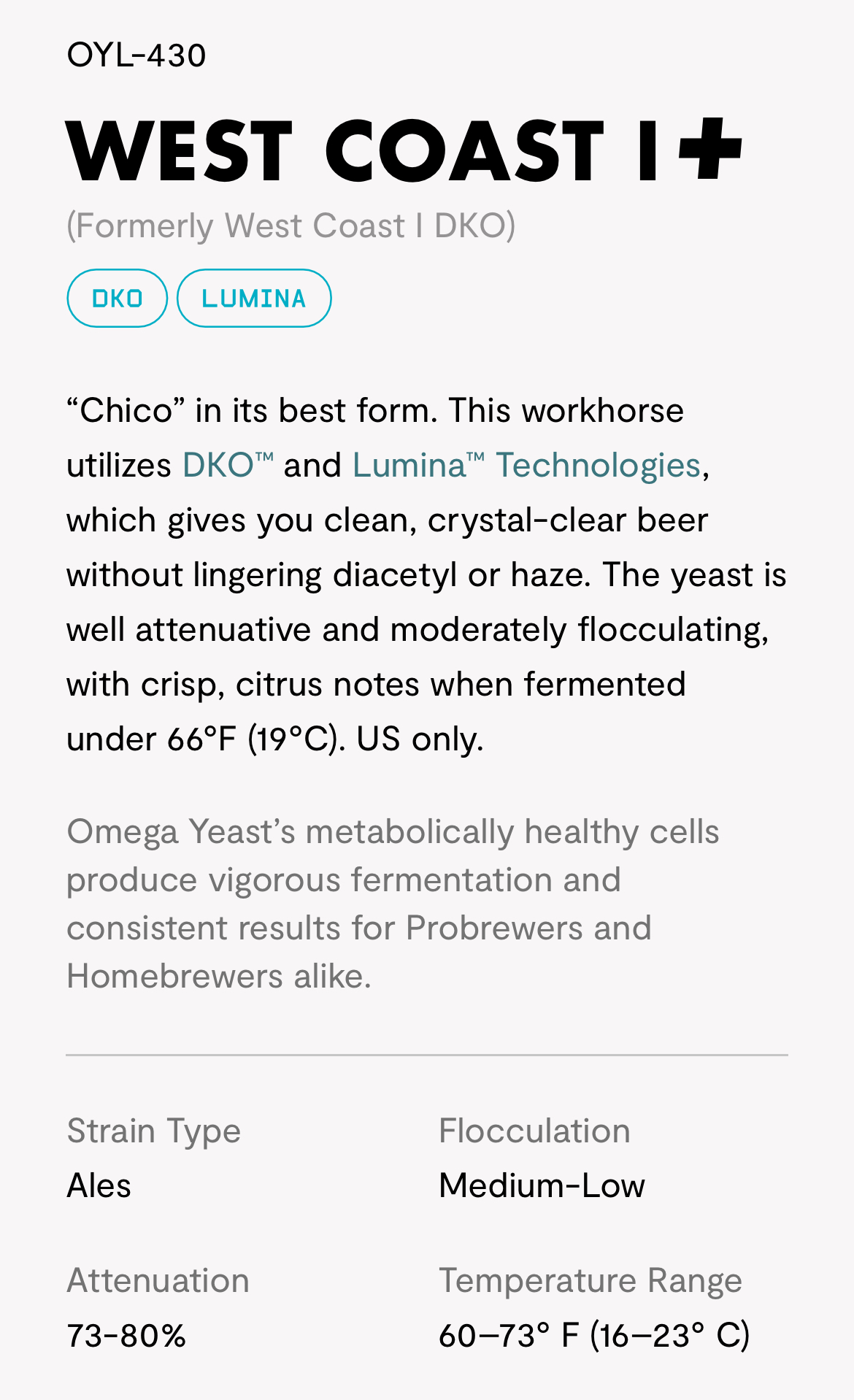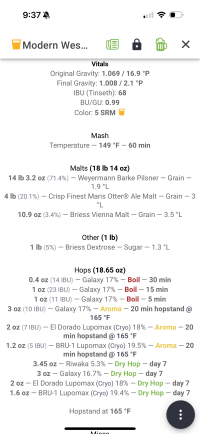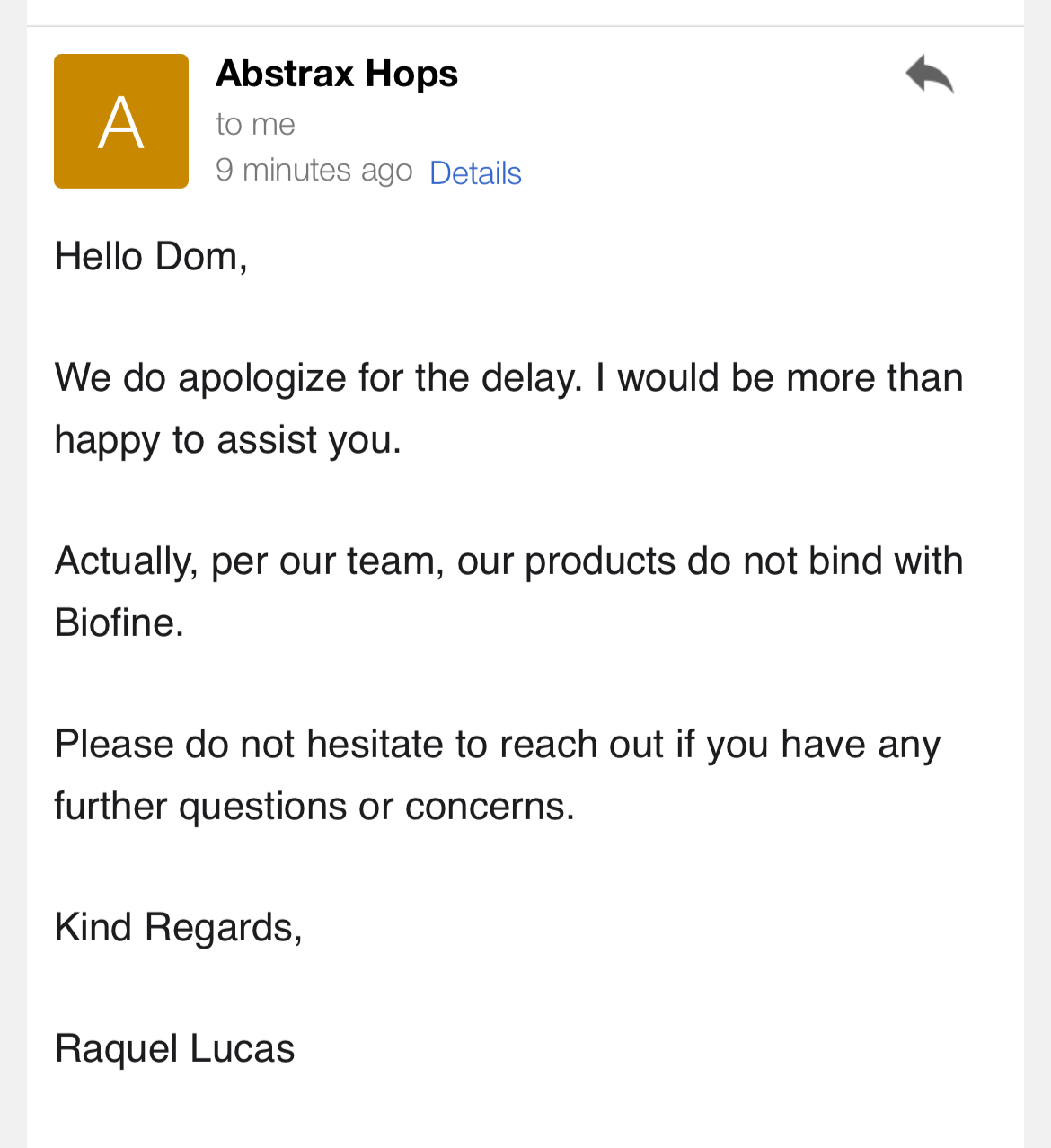TwitchellBrew
Active Member
I finally got around to brewing one of these. Been about 5 years since I’ve brewed a clear ipa. Recipe:
1.066 to 1.009, 7.5 abv, 5 gallons
56 ibu
water:
107 ca, 25 na, 53 cl, 140 so4
93 percent rahr 2 row
7 percent carafoam
0.25 oz Nelson for 60 mins
1 oz each Nelson and mosaic at 10
2 oz mosaic, 1 oz Nelson at whirlpool (180 degree)
4 oz mosaic, 3 oz Nelson dry hop
Bry-97 at 66 for 3 days and ramped to 70. Dry hopped at 70 for 4 days. I usually drop yeast and dry hop cold but was running with Vinny’s advice here.
Really came together after 2 weeks in the keg. Overall I love this beer. My wife who mainly drinks hazys said it’s amazing as well. Potential improvements: I really like the water and ibu here. I think it can handle a slightly higher dry hop. Id like to add strata in here as well and see how that goes, I just didn’t have any. Also would like to try biofine. This was gelatin fined and the clarity isn’t quite where I want it.
1.066 to 1.009, 7.5 abv, 5 gallons
56 ibu
water:
107 ca, 25 na, 53 cl, 140 so4
93 percent rahr 2 row
7 percent carafoam
0.25 oz Nelson for 60 mins
1 oz each Nelson and mosaic at 10
2 oz mosaic, 1 oz Nelson at whirlpool (180 degree)
4 oz mosaic, 3 oz Nelson dry hop
Bry-97 at 66 for 3 days and ramped to 70. Dry hopped at 70 for 4 days. I usually drop yeast and dry hop cold but was running with Vinny’s advice here.
Really came together after 2 weeks in the keg. Overall I love this beer. My wife who mainly drinks hazys said it’s amazing as well. Potential improvements: I really like the water and ibu here. I think it can handle a slightly higher dry hop. Id like to add strata in here as well and see how that goes, I just didn’t have any. Also would like to try biofine. This was gelatin fined and the clarity isn’t quite where I want it.


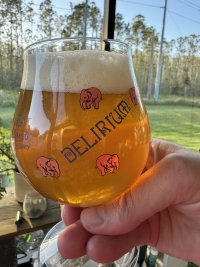
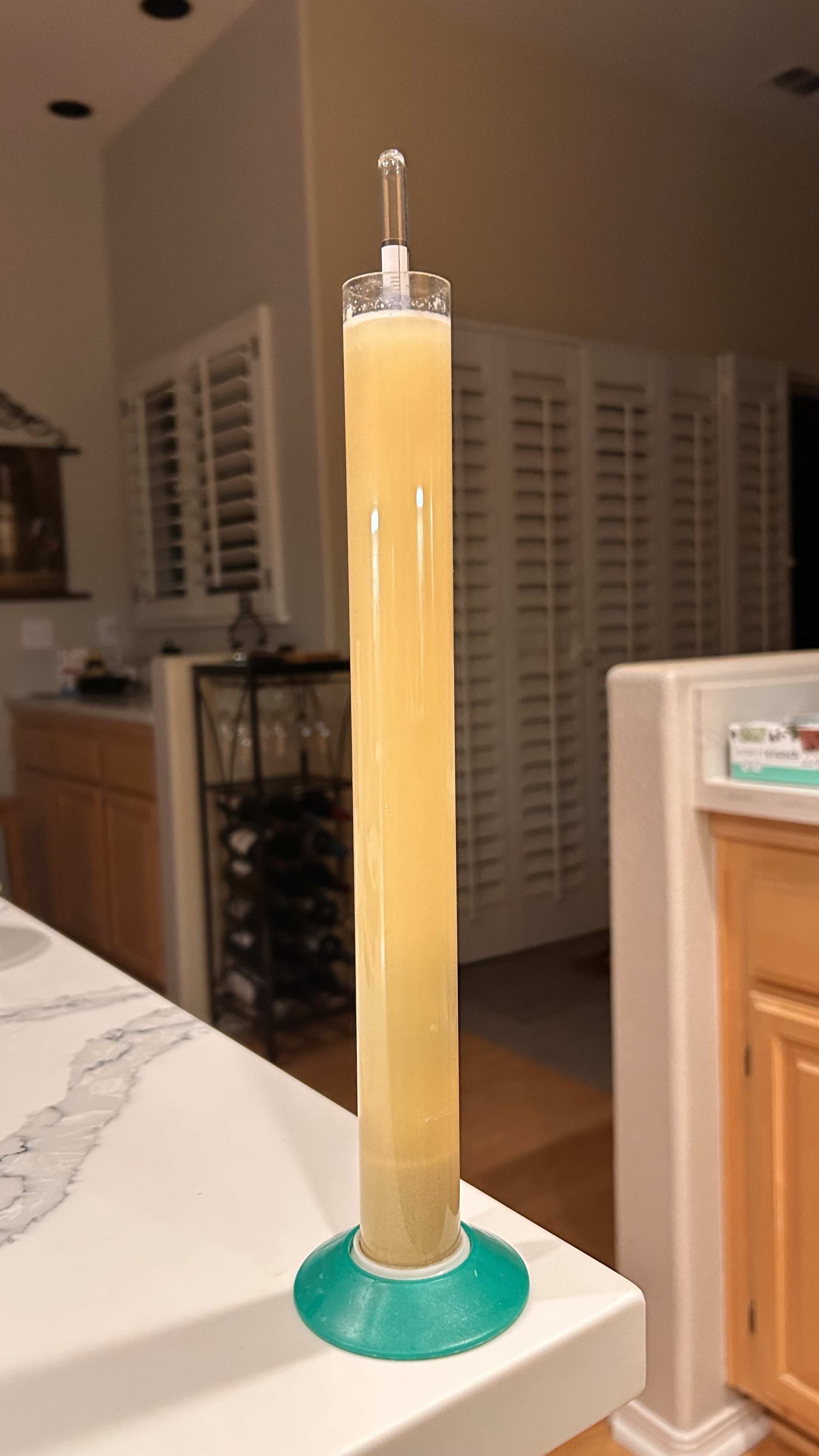

























![Craft A Brew - Safale BE-256 Yeast - Fermentis - Belgian Ale Dry Yeast - For Belgian & Strong Ales - Ingredients for Home Brewing - Beer Making Supplies - [3 Pack]](https://m.media-amazon.com/images/I/51bcKEwQmWL._SL500_.jpg)





























